The Drift: Day One
with Samantha Adler de Oliveira, Luis Alonzo, Trevor Amery, Prerna Bishnoi, John Dombroski, Anastasia Douka, Zachary Fabri, Mauro Giaconi, Daniel Giles, Joshua Haycraft, Shana Hoehn, Mira Hunter, Kristian Blomstroem Johansson, Nicholas Johnston, Lindsay Lawson, Christopher Meerdo, Harold Mendez, Joiri Minaya, Michaela Murphy, Jordie Oetken, Omar Rodriguez Graham, Erik Swanson, Seneca Weintraut, May Wilson, and Lindsay Zappas
July 30, 2013
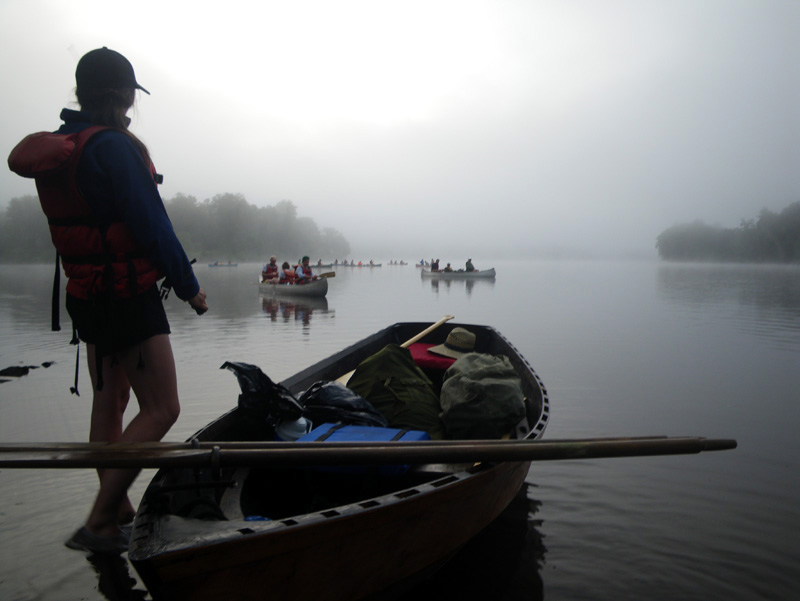
“In a dérive one or more persons during a certain period drop their relations, their work and leisure activities,”
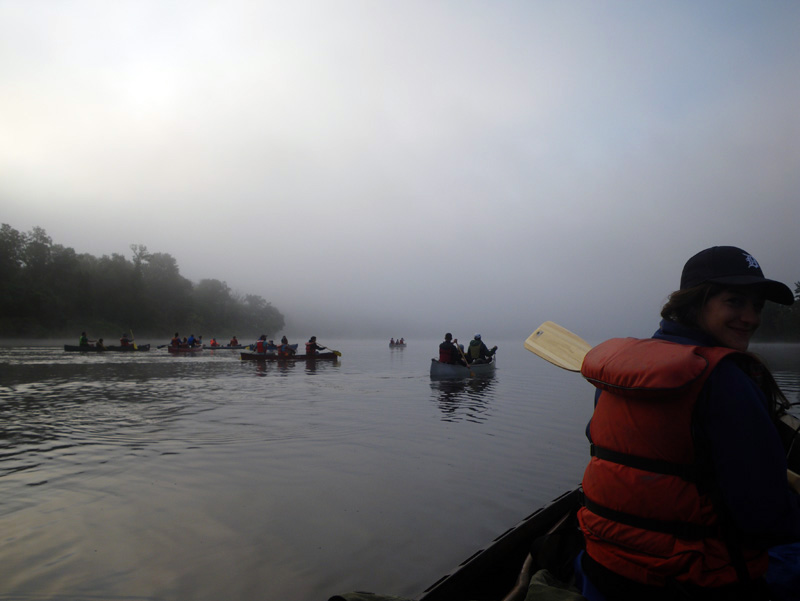
“and all their other usual motives for movement and action,”
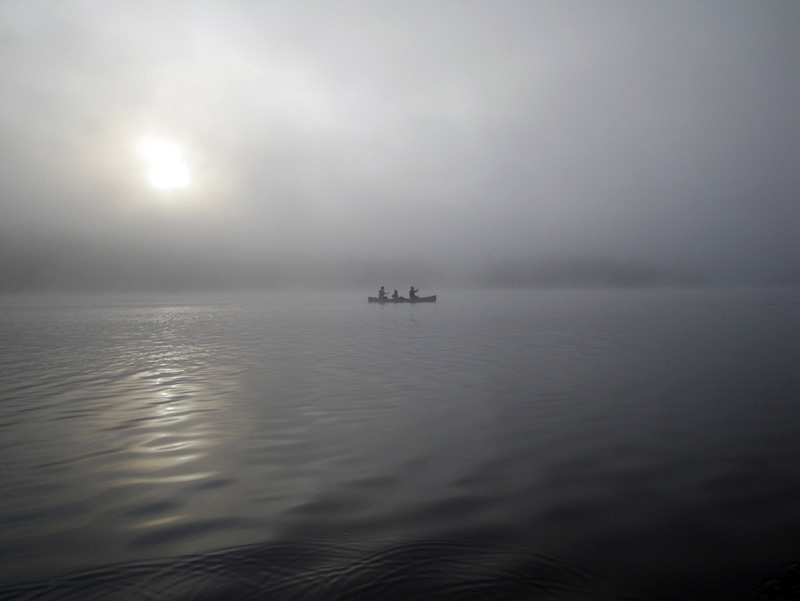
“and let themselves be drawn by the attractions of the terrain and the encounters they find there.”
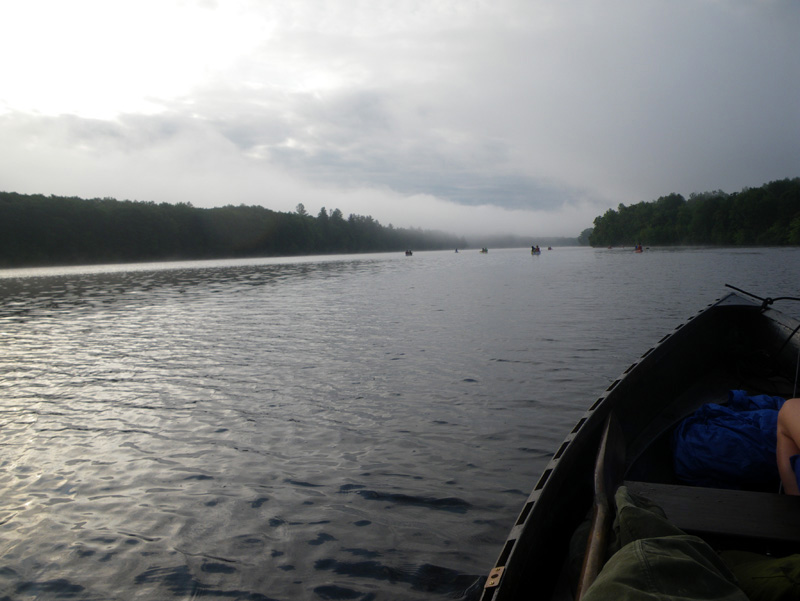
“Chance is a less important factor in this activity than one might think:”
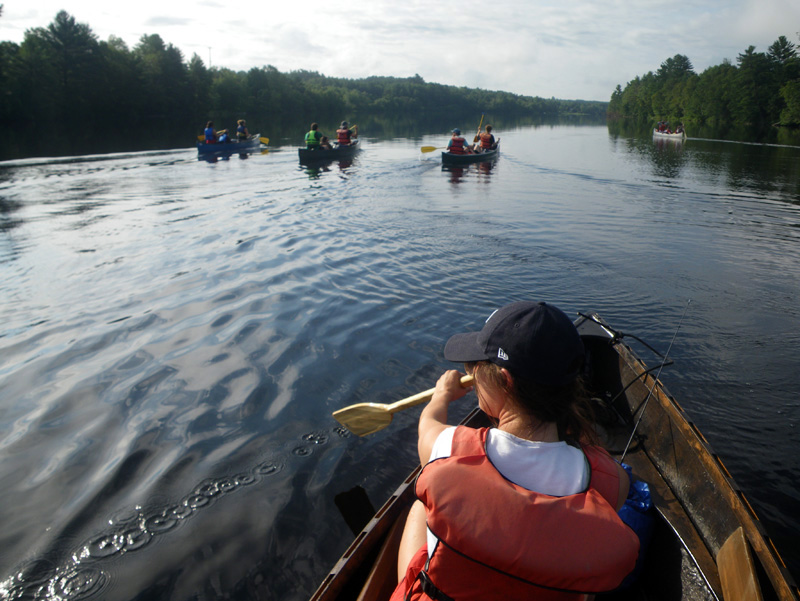
“from a dérive point of view cities have psychogeographical contours, with constant currents,”
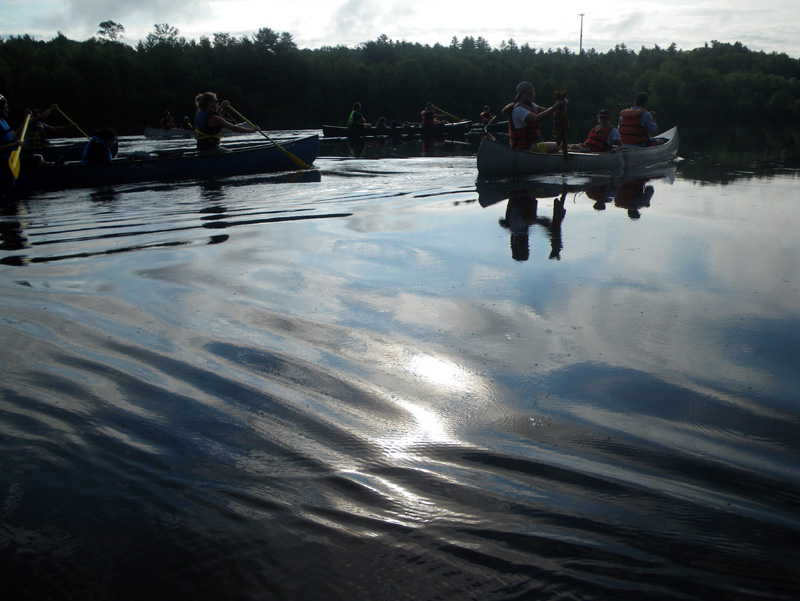
“fixed points and vortexes that strongly discourage entry into or exit from certain zones.”
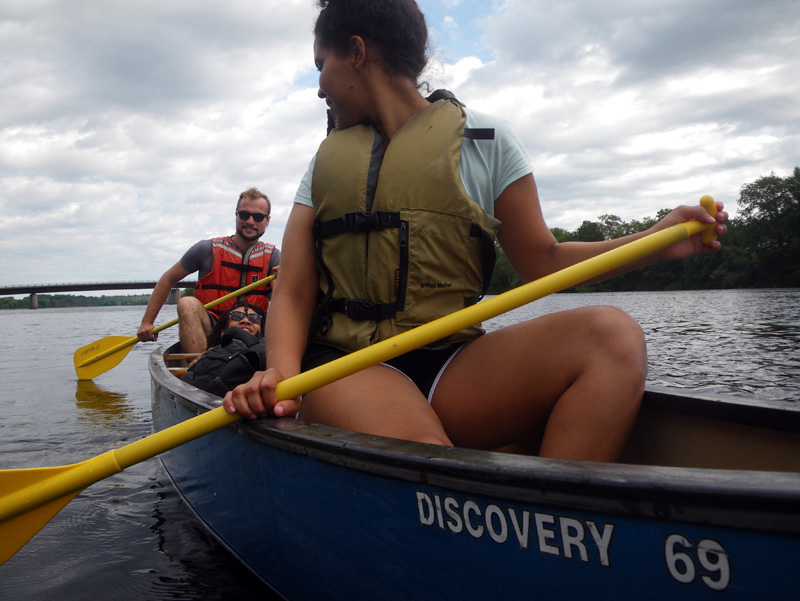
“The dérive includes both this letting-go and its necessary contradiction: the domination of psychogeographical variations,”
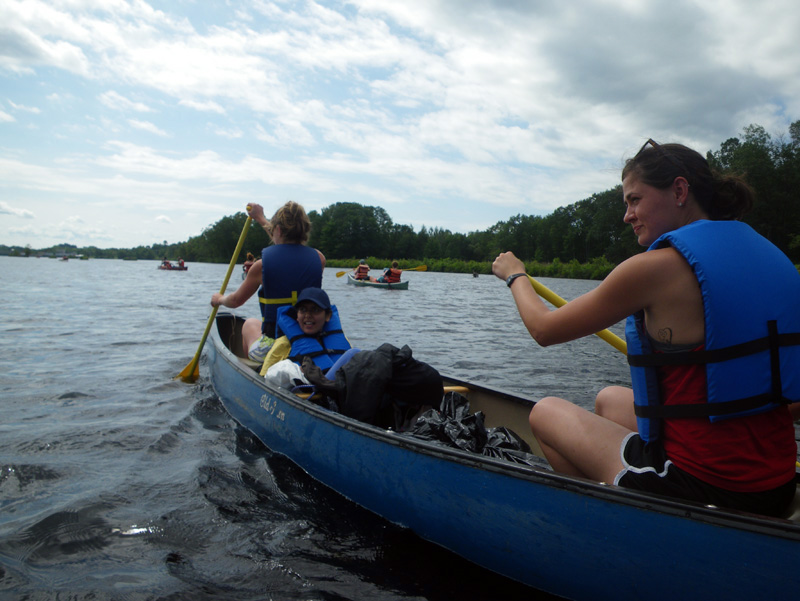
“by the knowledge and calculation of their possibilities.”
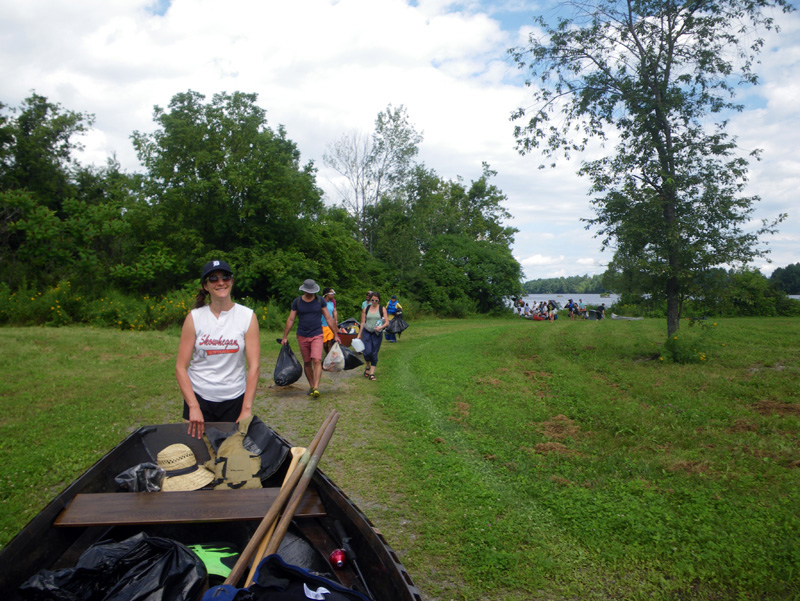
“The lessons drawn from dérives enable us to draft the first surveys of the psychogeographical articulations of a modern city.”
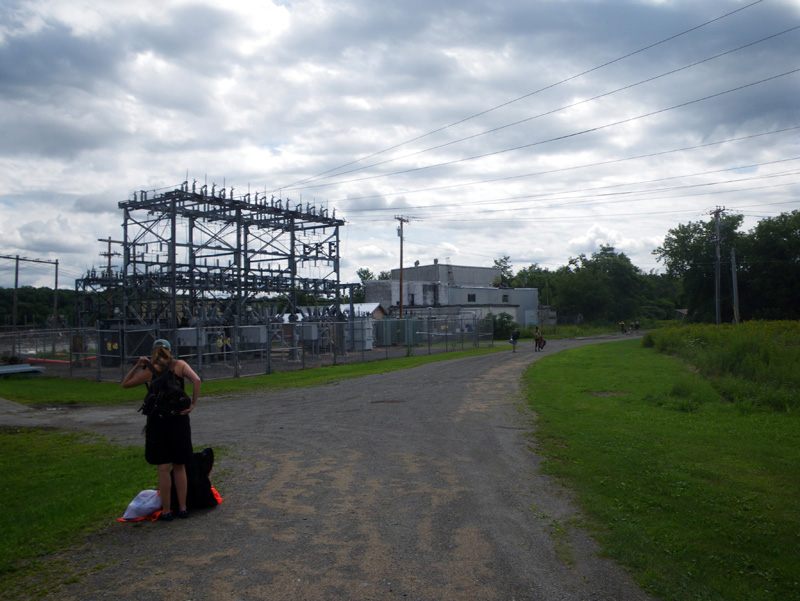
“One arrives at the central hypothesis of the existence of psychogeographical pivotal points.”
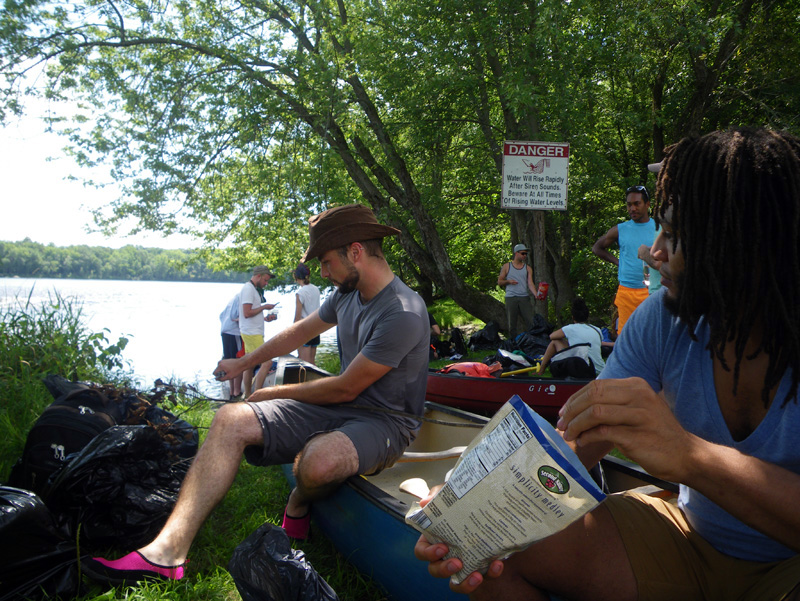
“One measures the distances that actually separate two regions of a city,”
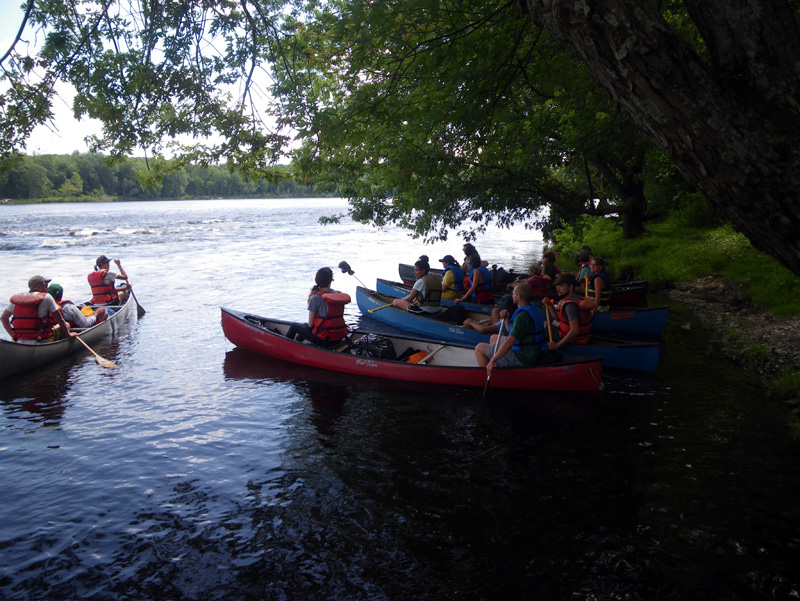
“distances that may have little relation with the physical distance between them.”
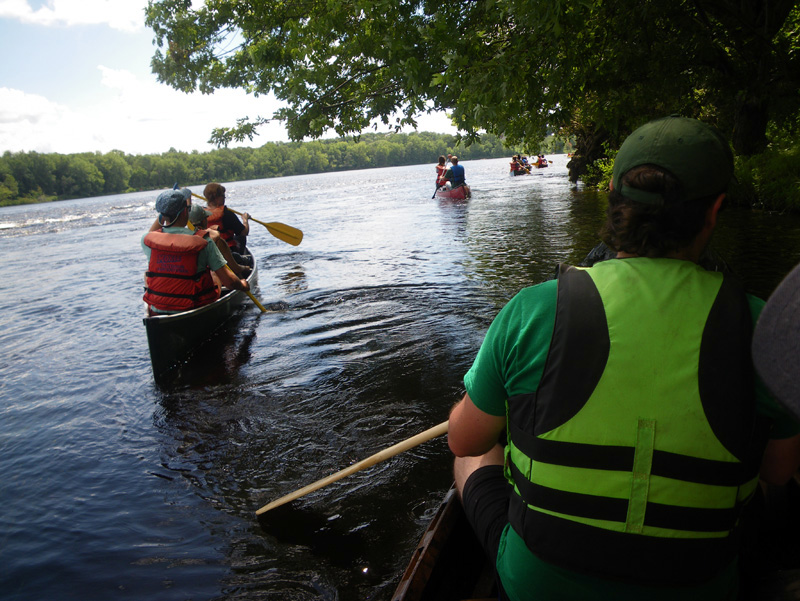
“With the aid of old maps, aerial photographs and experimental dérives, one can draw up hitherto lacking maps of influences,”
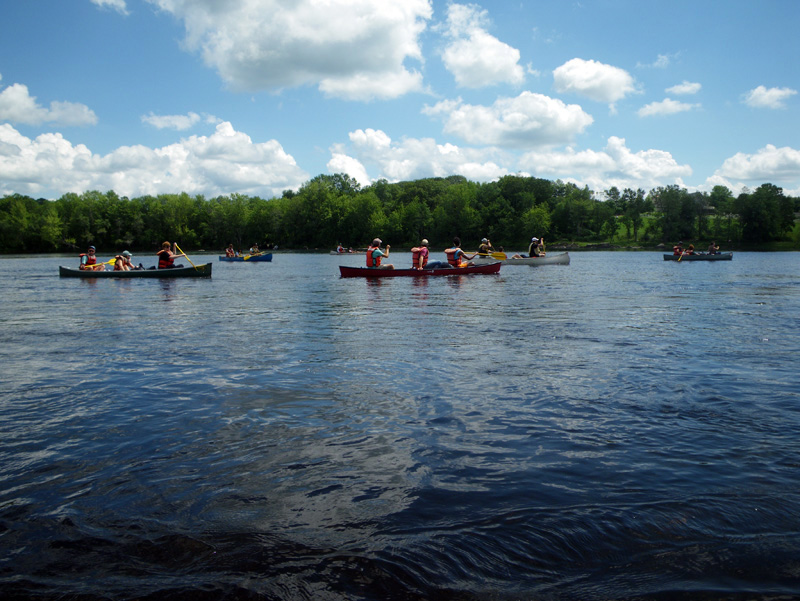
“maps whose inevitable imprecision at this early stage is no worse than that of the earliest navigational charts.”
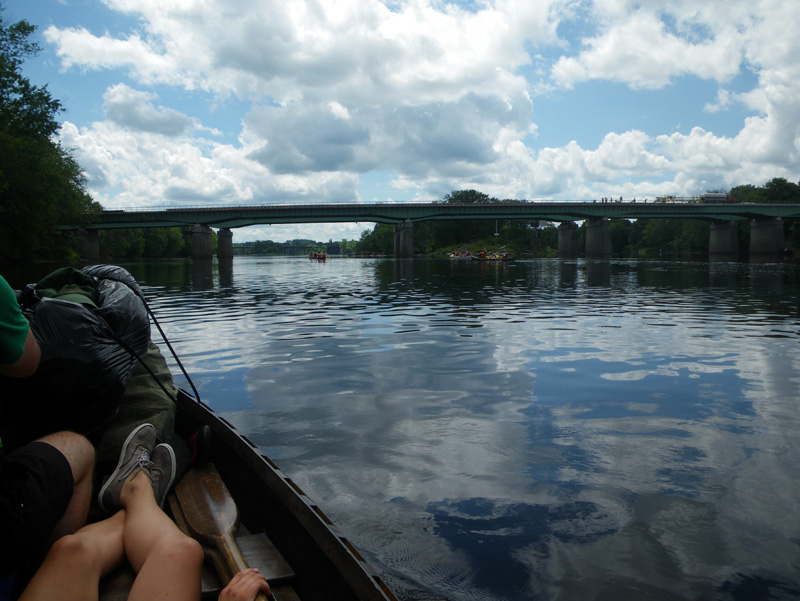
This is how Guy Debord describes a special form of experimental wandering in ‘The Theory of the Dérive’ (1956).
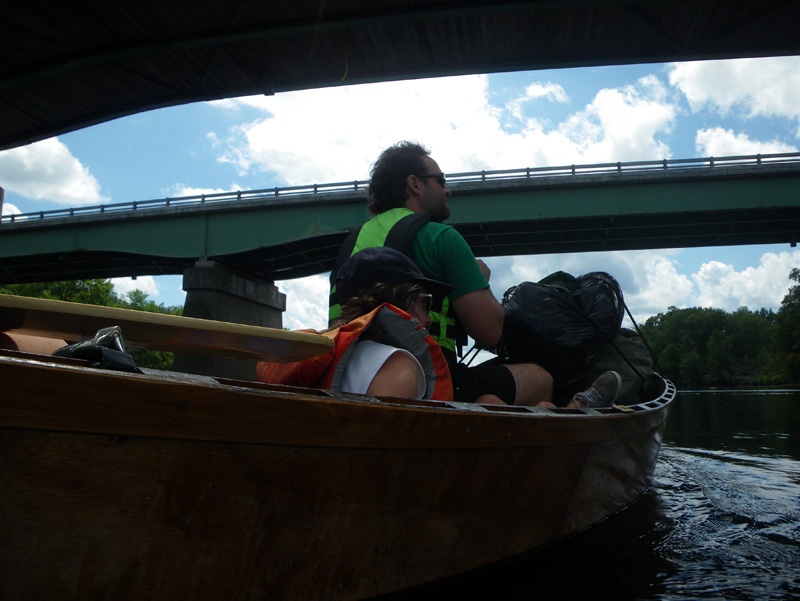
At the end of the essay he wrote, “to be continued”,
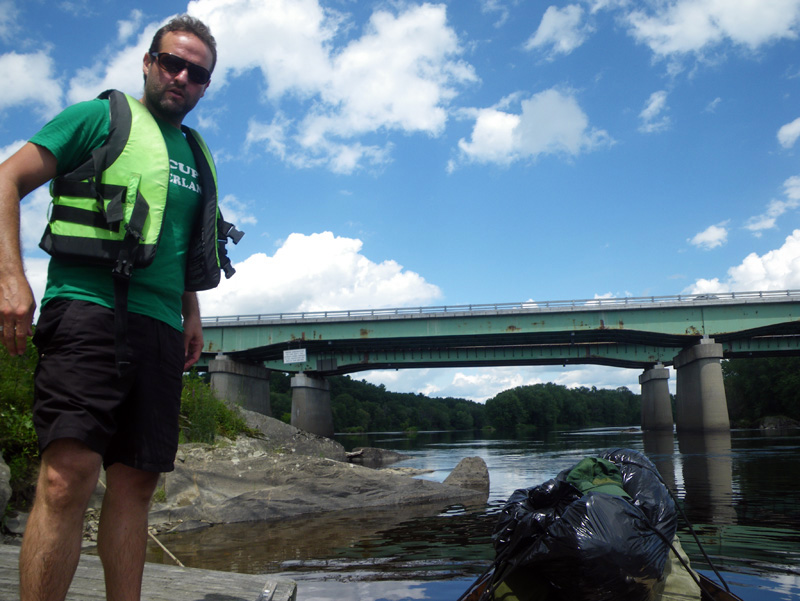
but then he never really wrote about it again.
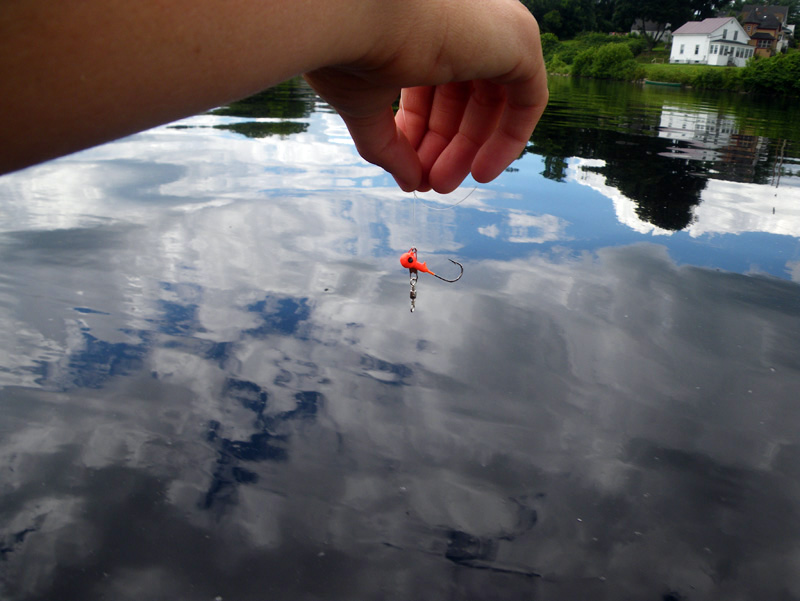
There are a few proposals for Dérives in the Situationist International writings between 1954-1956,
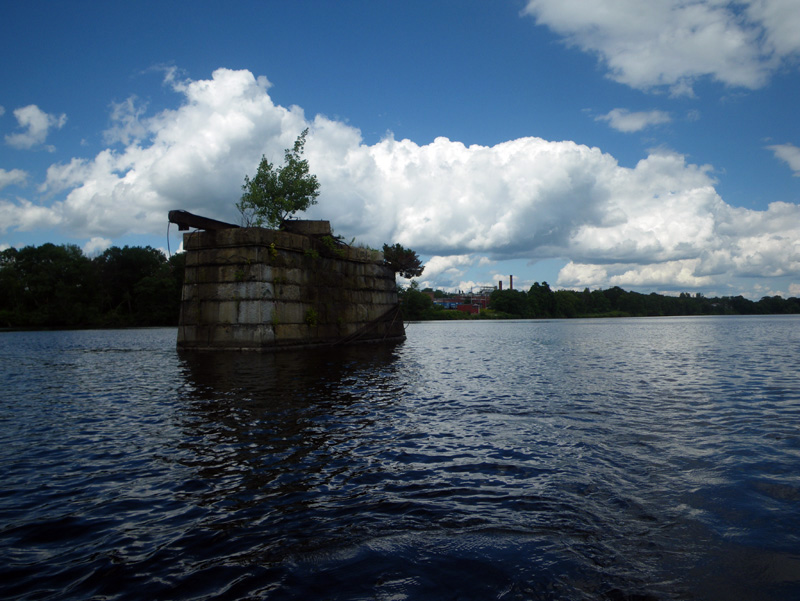
but for the most part, it’s as if the ‘Theory of the Dérive’ itself just wondered off course, disappeared, or took a wrong turn.
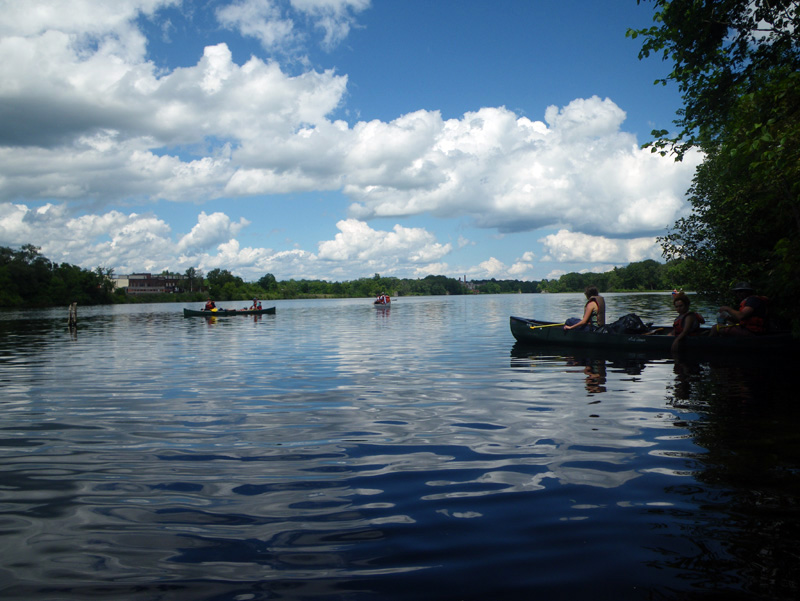
However incomplete, ‘The Theory of the Dérive’ served as the inspiration for a special boat trip taken by some participants of the Skowhegan School of Painting and Sculpture in the summer session of 2013.
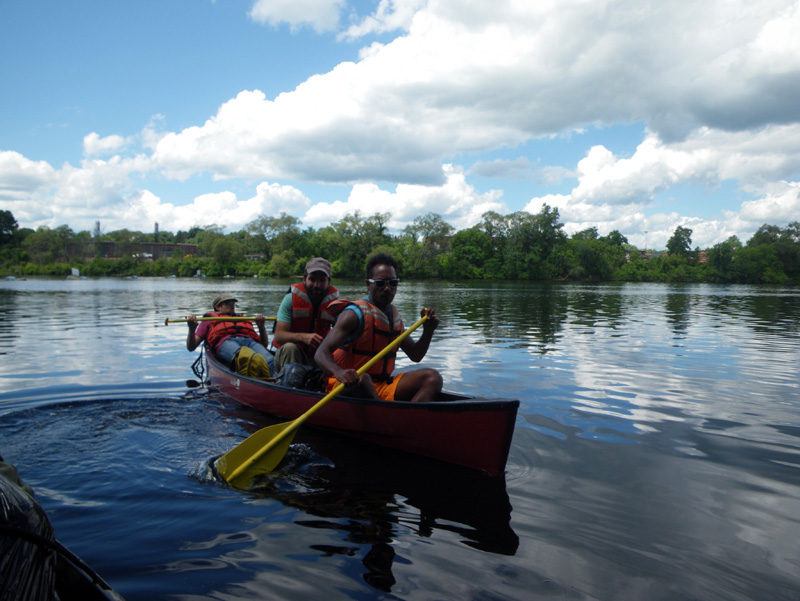
Twenty-five people, paddling in nine boats, set off down the Kennebec River on July 30th,
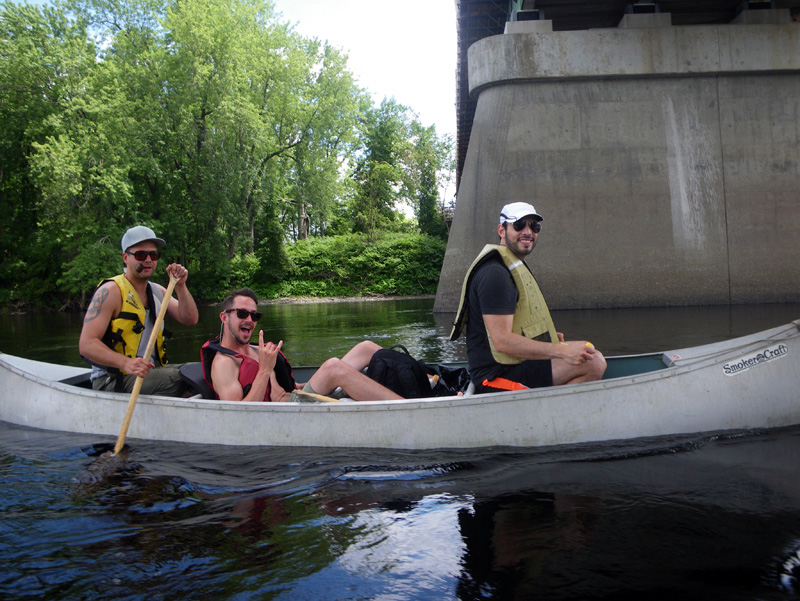
to drift from Skowhegan to the ocean, or as far as we could go in two days.
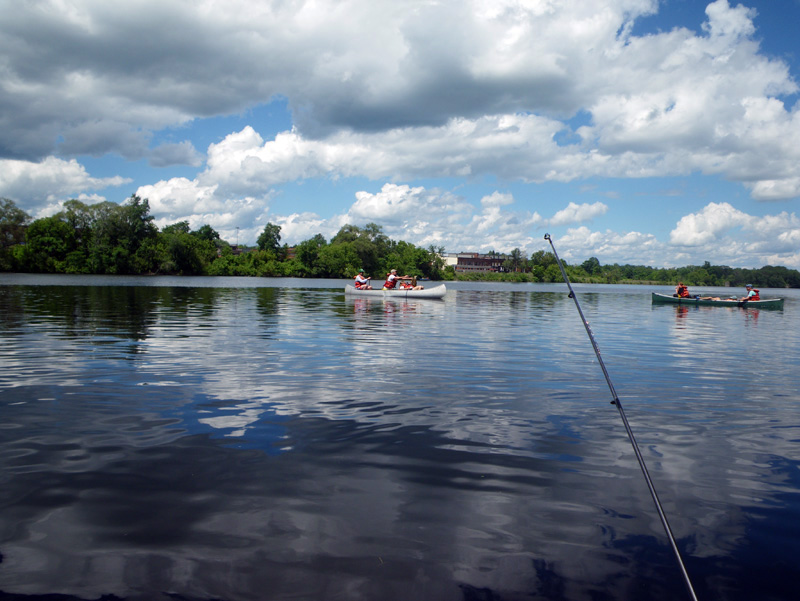
We were determined to let the landscape draw us by the ‘attractions of the terrain and the encounters we would find there’.
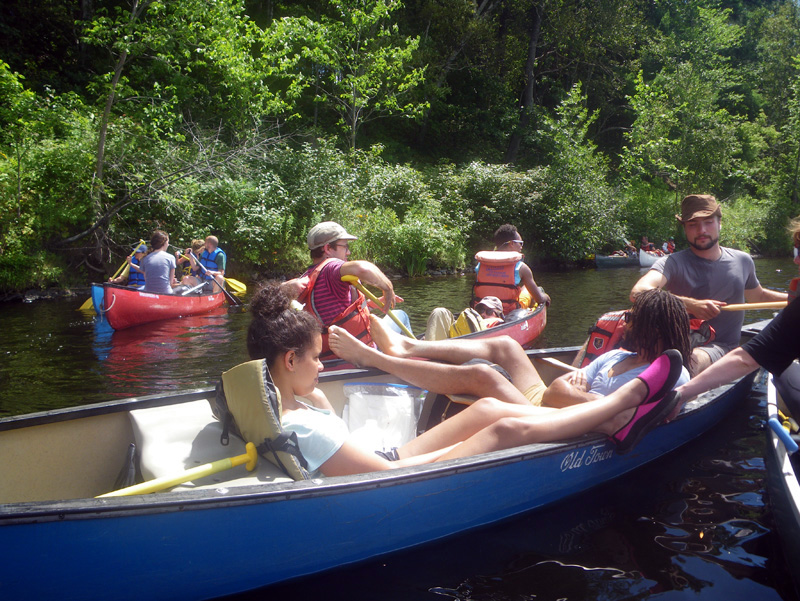
Around 1pm on the first day, our drift came to an unexpected halt. We had arrived at the first of two dams in the town of Waterville.
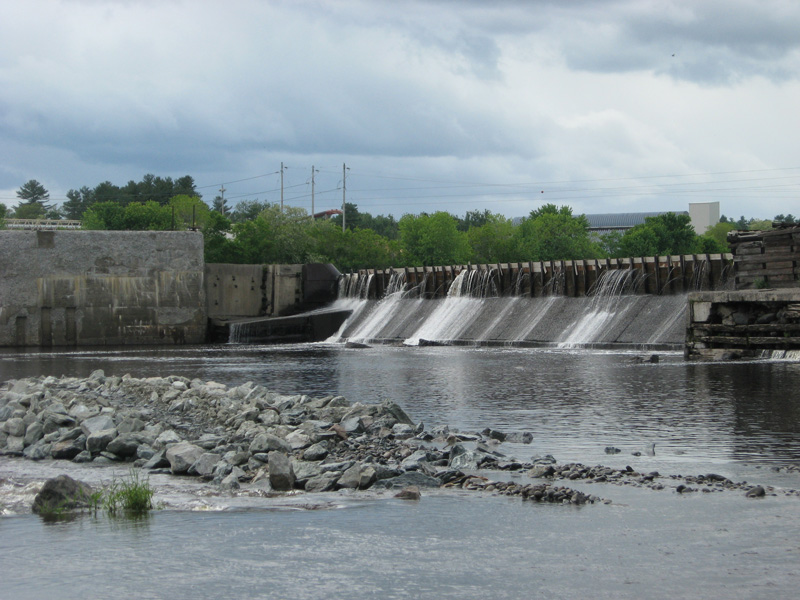
An employee at the electric station told us we could not put our boats in the water between the dams. The bank was too steep and the water was moving quickly, he said.
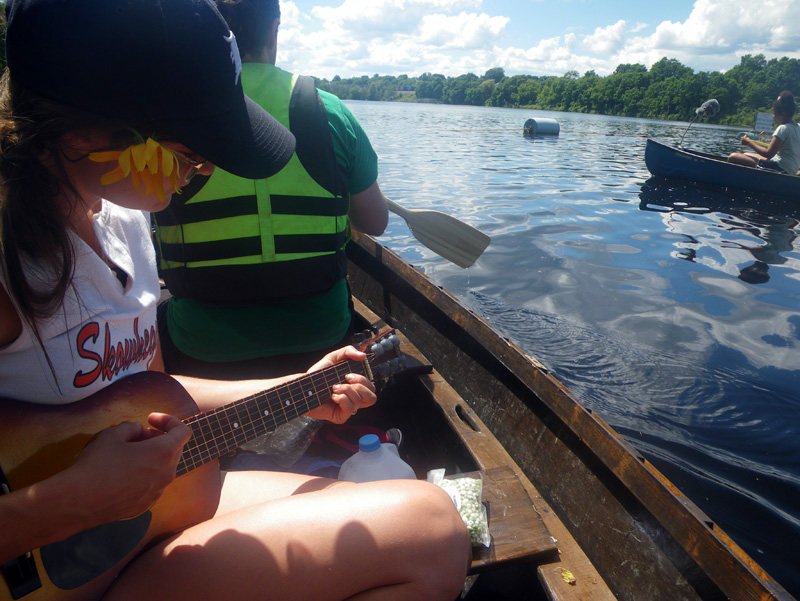
I realized that our only alternative was to walk the boats around both dams in Waterville. That would be a two mile trek with nine boats and hundreds of pounds of gear.
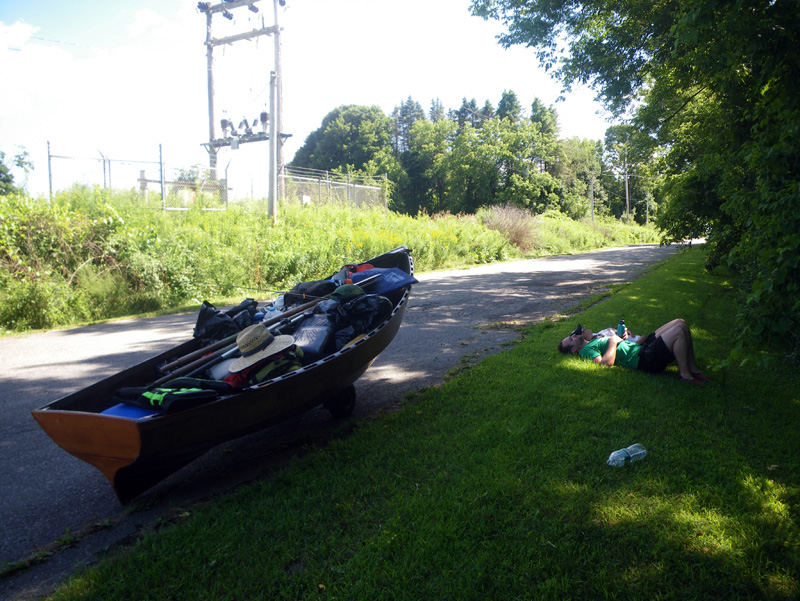
I had explained to the group before the trip that there might be some walking involved.

I told them that the trip might actually be miserable at times, but my warning had not deterred any of the campers.
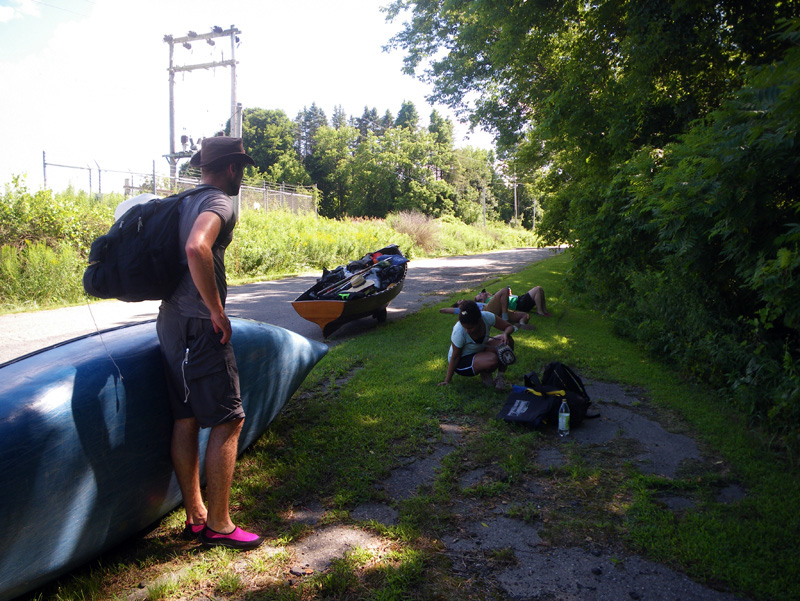
Now things were about to surpass my bleakest expectations. The sun that encouraged us all morning was now bearing down like a punishment.
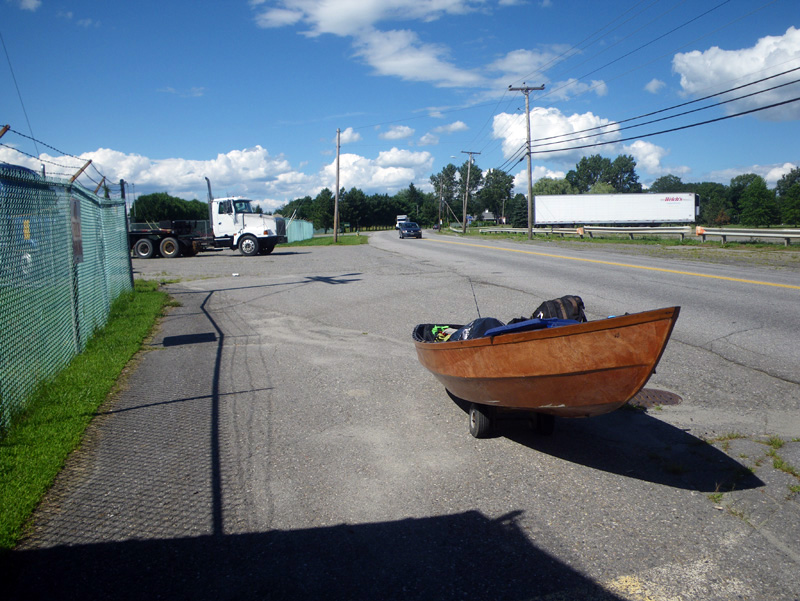
Around the first mile, a driver stopped and offered to carry our bags to the other side of the dam. I asked Danny and Shana to ride with him.
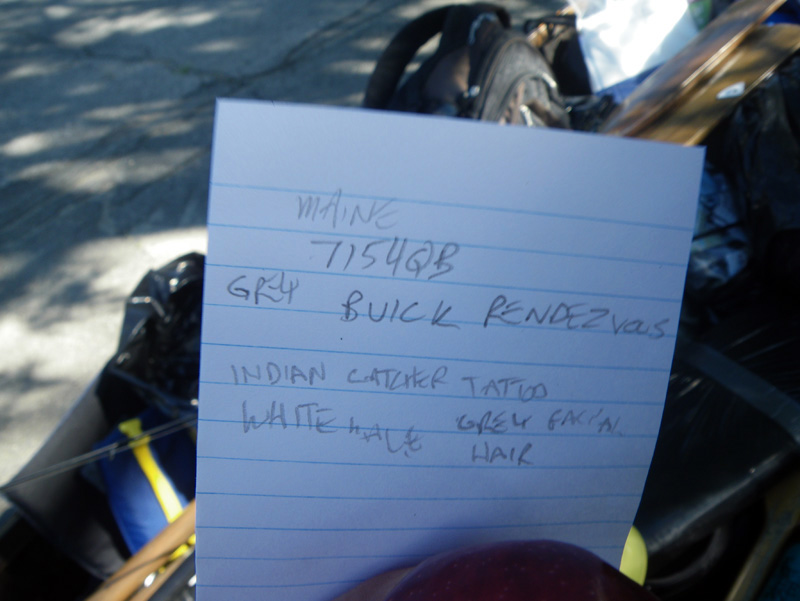
It was John who still had the wits to write down the driver’s licens plate number… along with some other interesting information.
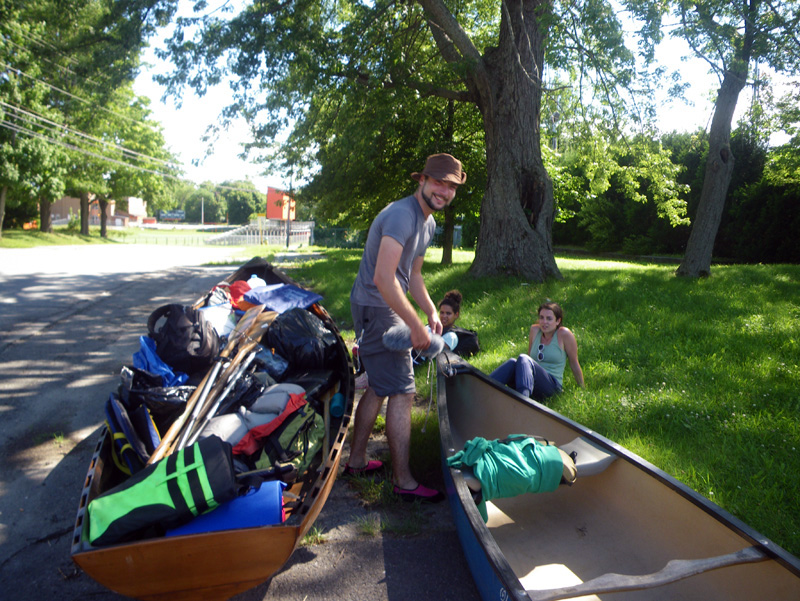
“In case we never see them again.” said John.
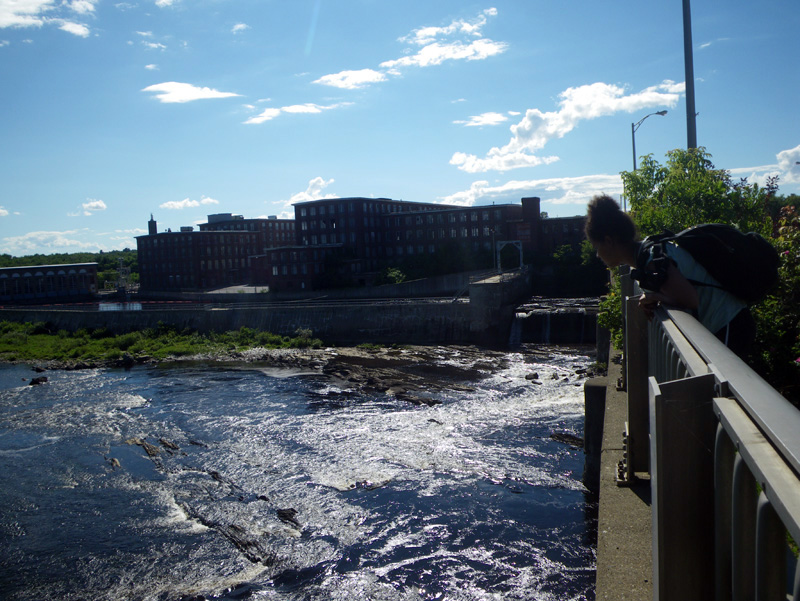
That’s what was great about traveling with so many talented artists. They can figure out what to do in any situation.
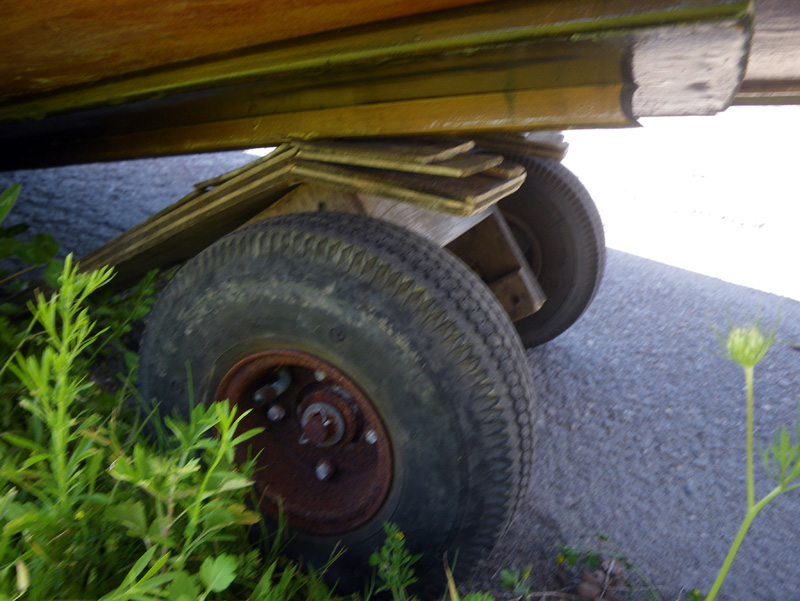
For instance, when the wheel mount that was carrying most of our stuff broke in two,
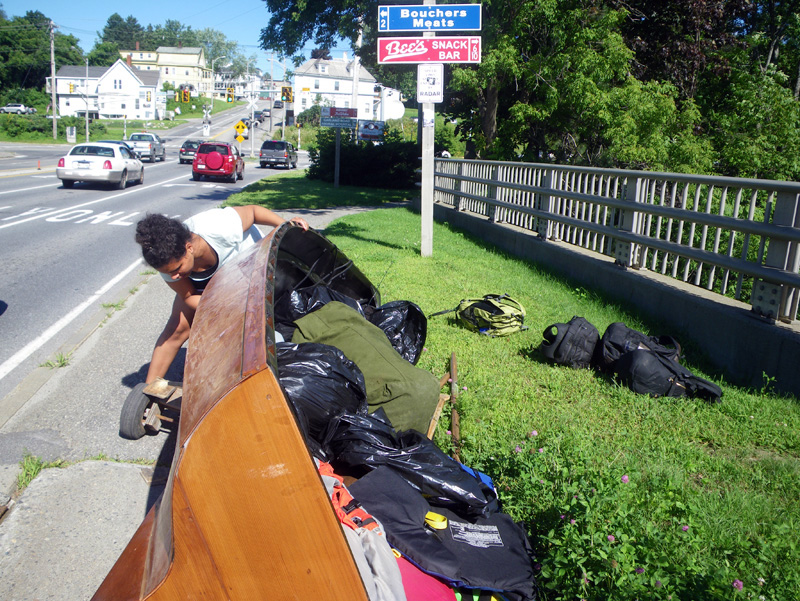
Jiori figured out how attach the wheels with a ratchet strap,
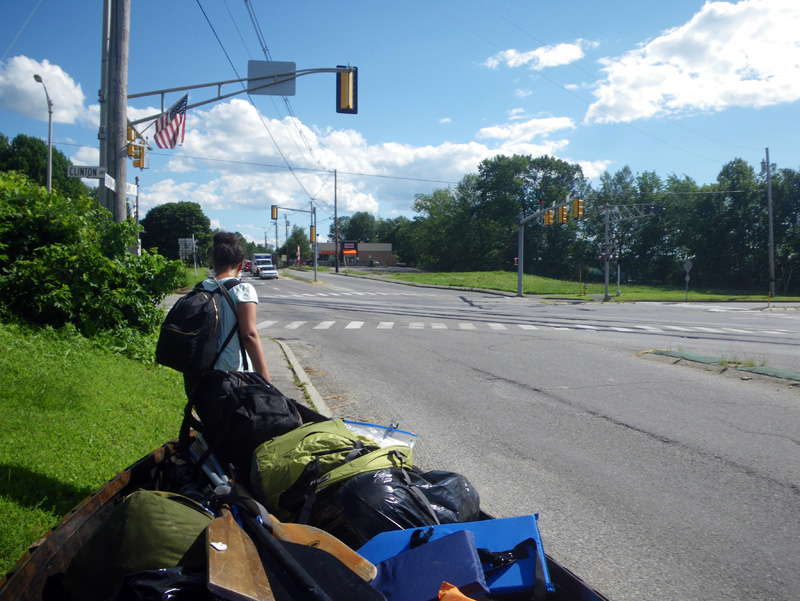
and it worked perfectly for the rest of the portage.
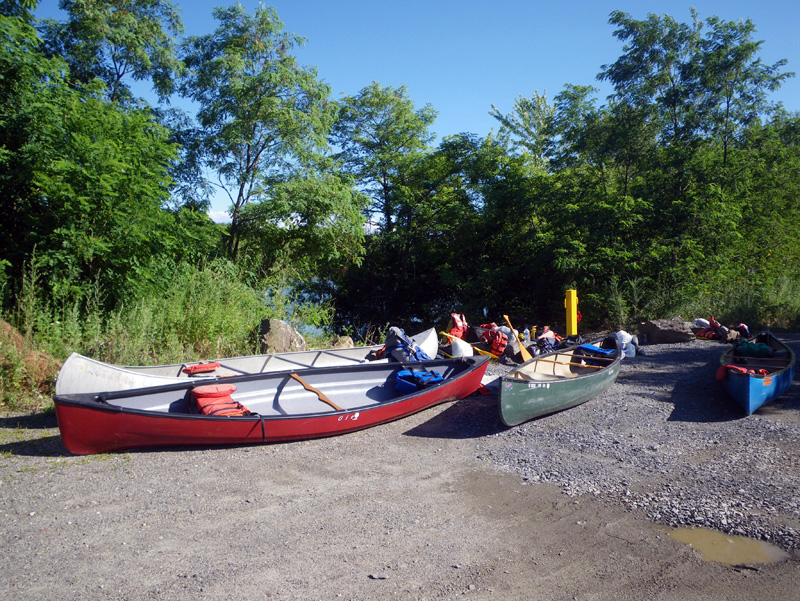
When we got to the other side of the dam, the rest of the canoes were already there.
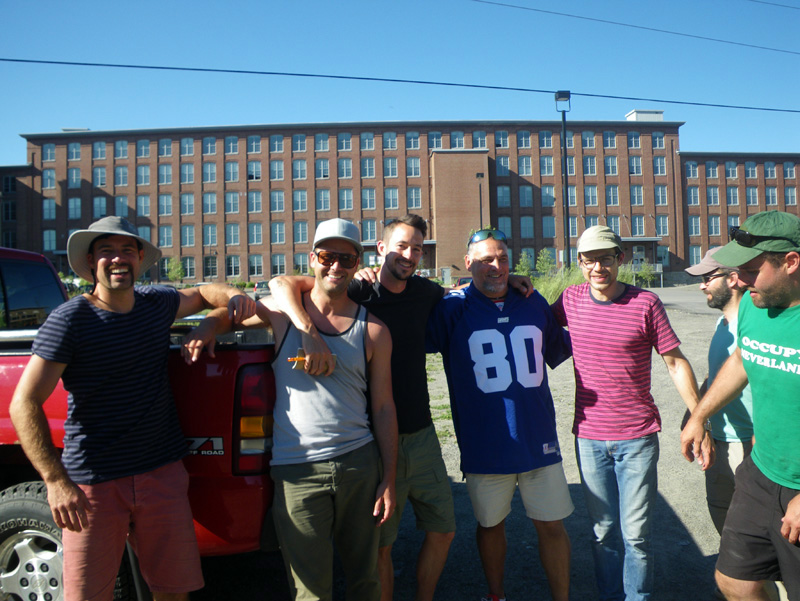
It turned out that the rest of the team found help as well. A man with a truck stopped to help Michaela’s crew and ended up making five trips with the rest of the gear, canoes and people. His name was Royce and he used to work for the United States Postal Service.
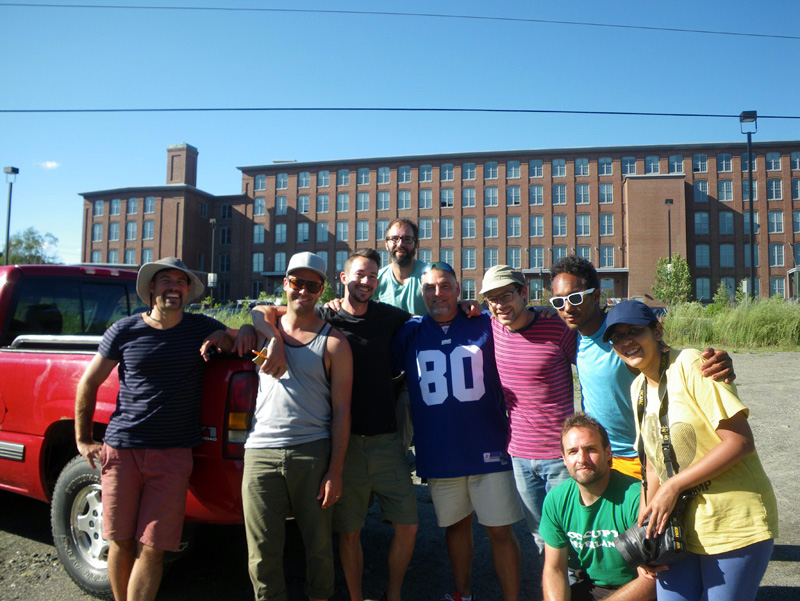
“I know what it means to deliver.” said Royce (number 80).
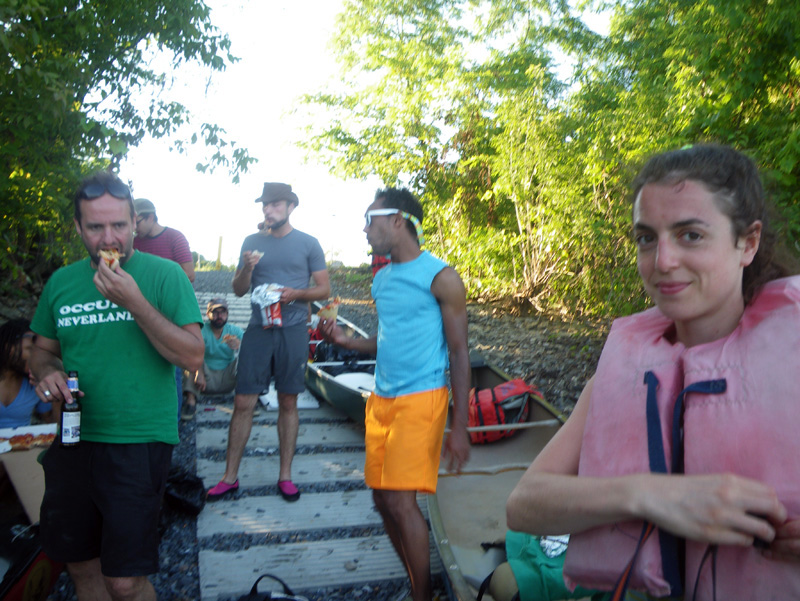
Even with Royce’s help the two mile portage had taken almost 4 hours,

so Chris and Lindsay made a special delivery of their own.
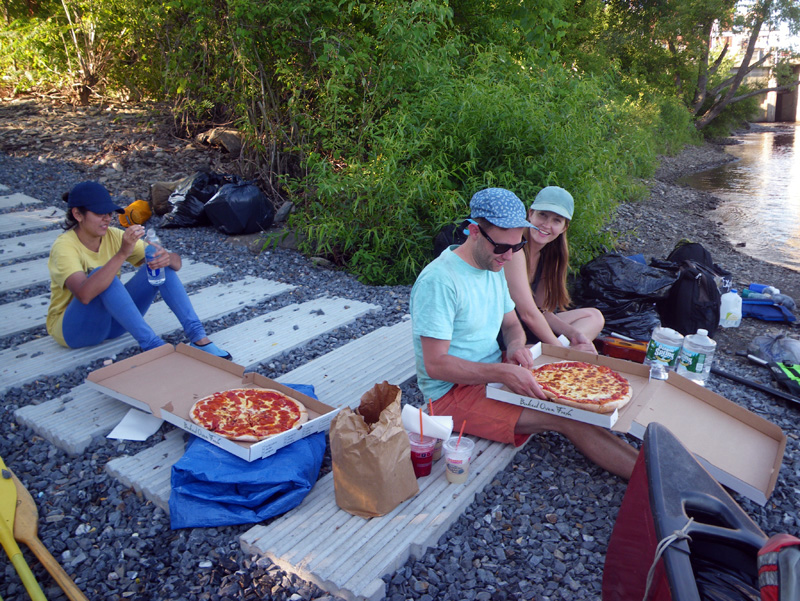
Like all things seasoned with hunger, the pizza was delicious.
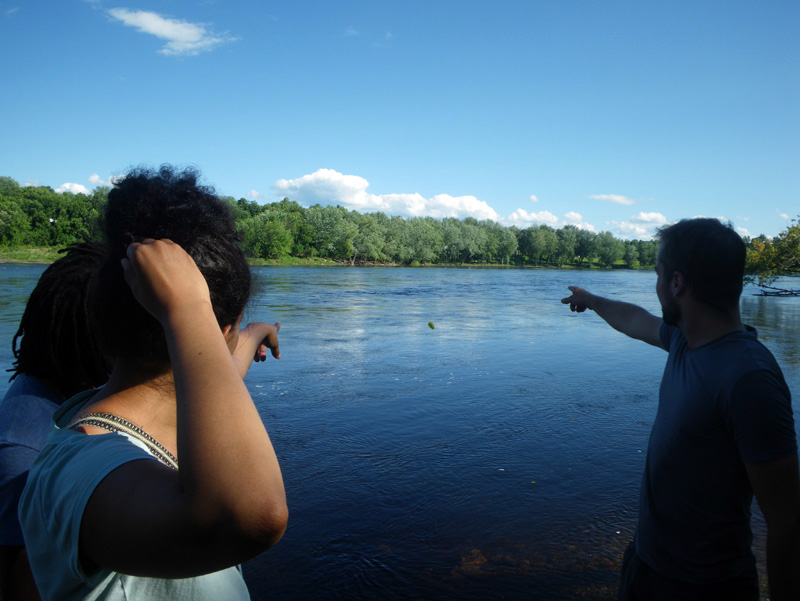
Some of our crew had been dropped at a launch on the other side of the river,
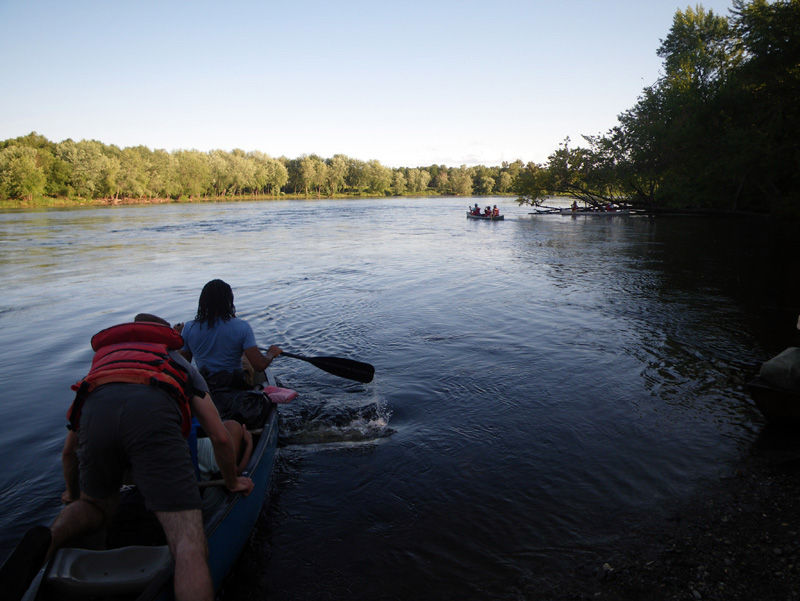
so we set off to reunite.
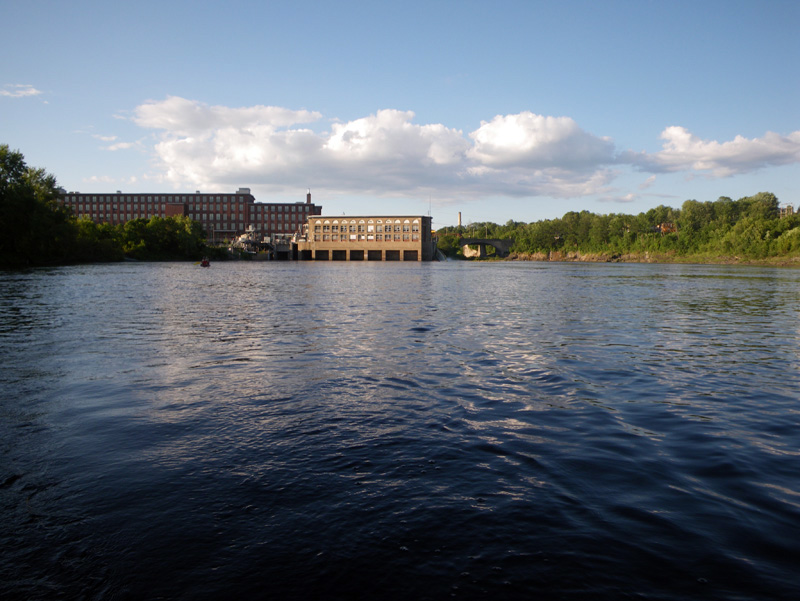
The water below the dam was moving fast,
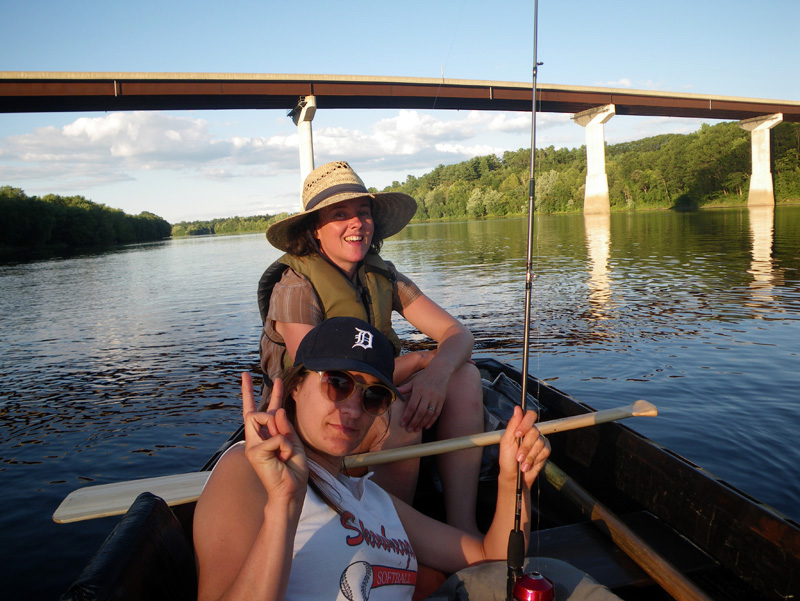
and soon Waterville disappeared behind a bank of trees.
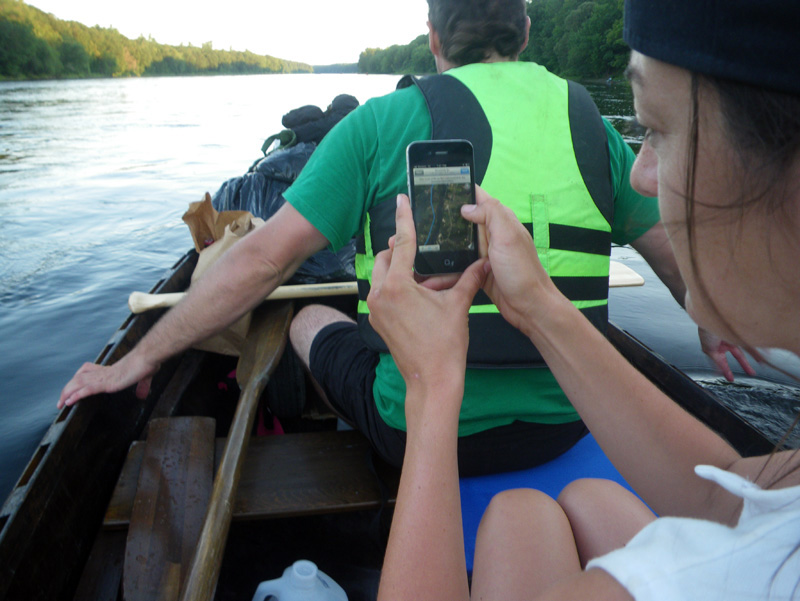
This was the stretch of river that I had been waiting for; a strangely inaccessible green belt situated between Interstate 95 and highway 201.
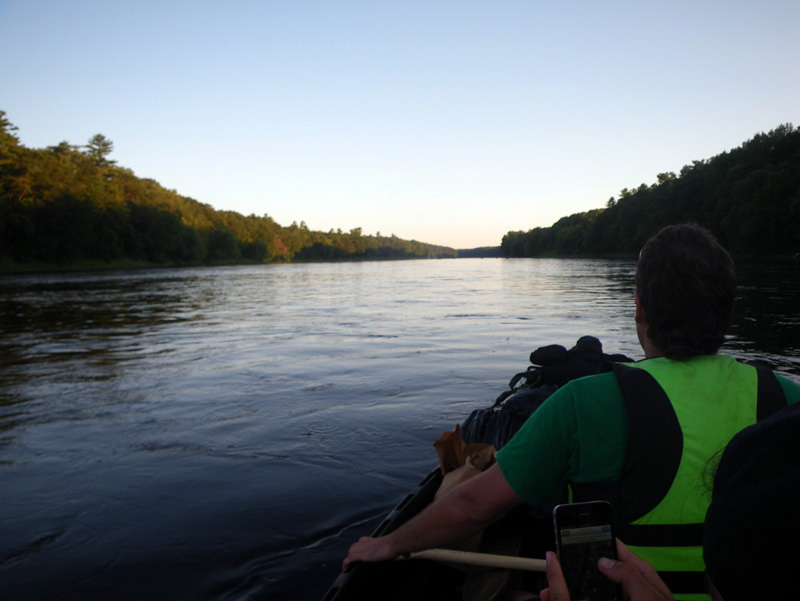
As far as our eyes were concerned, we were paddling through the wilderness,
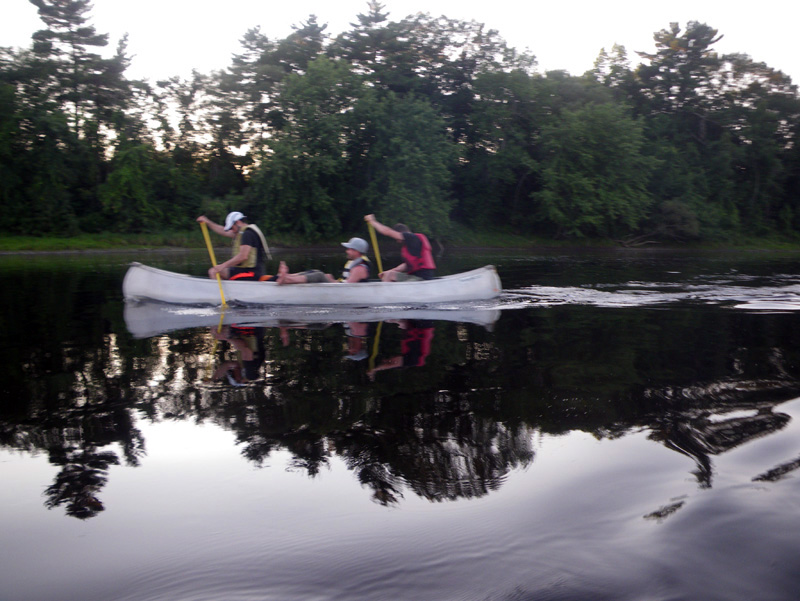
but if you listened carefully, you could hear the interstate rumbling in the distance.
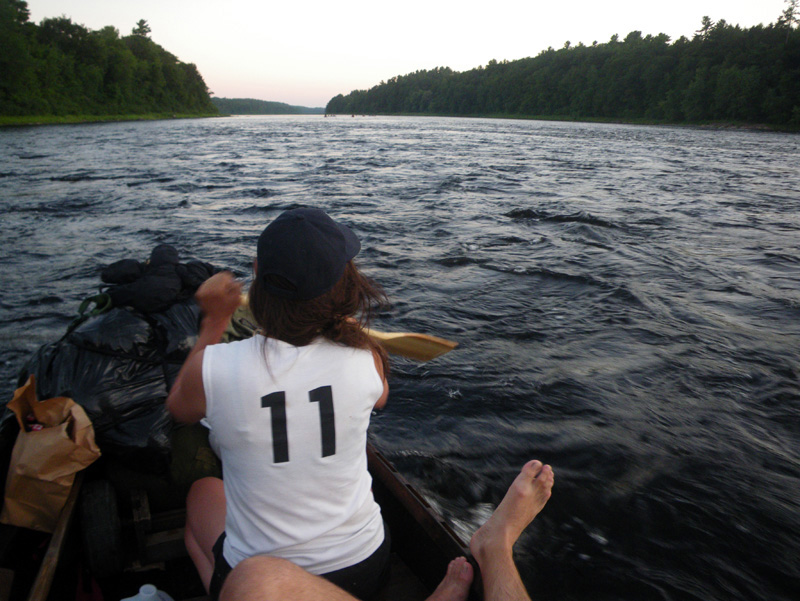
This is my favorite kind of travel. We were not exactly off the beaten track, but we weren’t on it either.
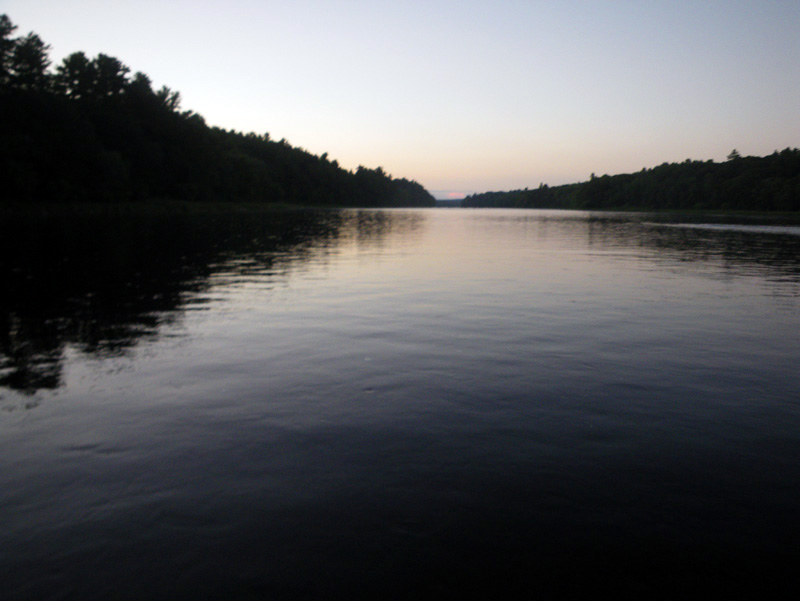
We were gliding quietly along, invisible to the rest of the world, parallel to one of the busiest transportation corridors in the country.
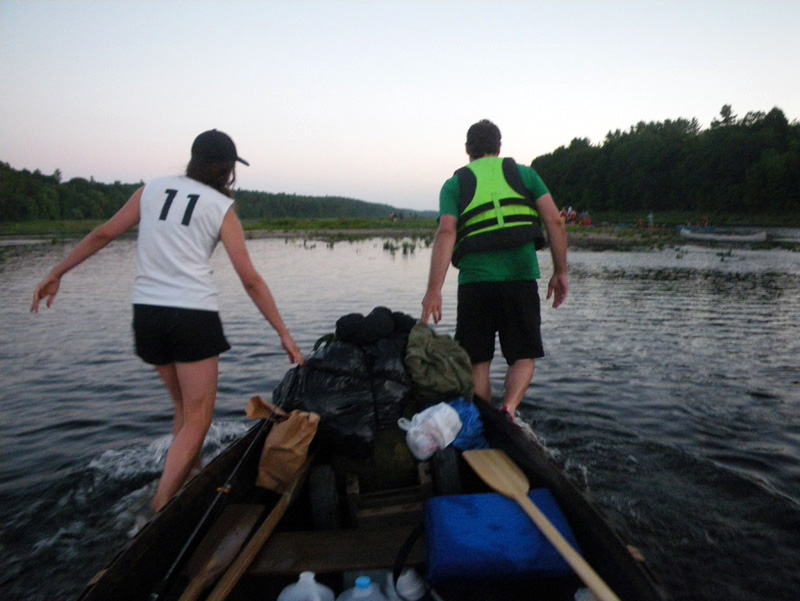
We made landfall just before dark,
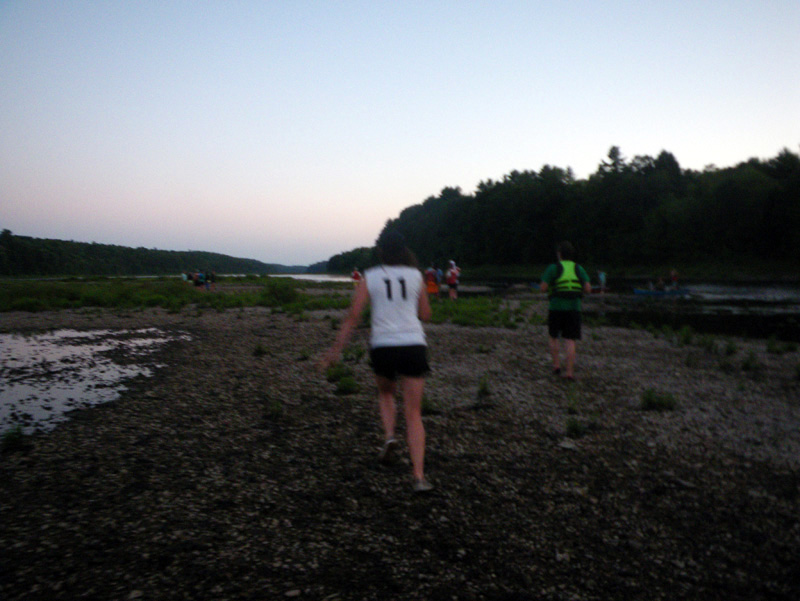
a tiny island in the river,
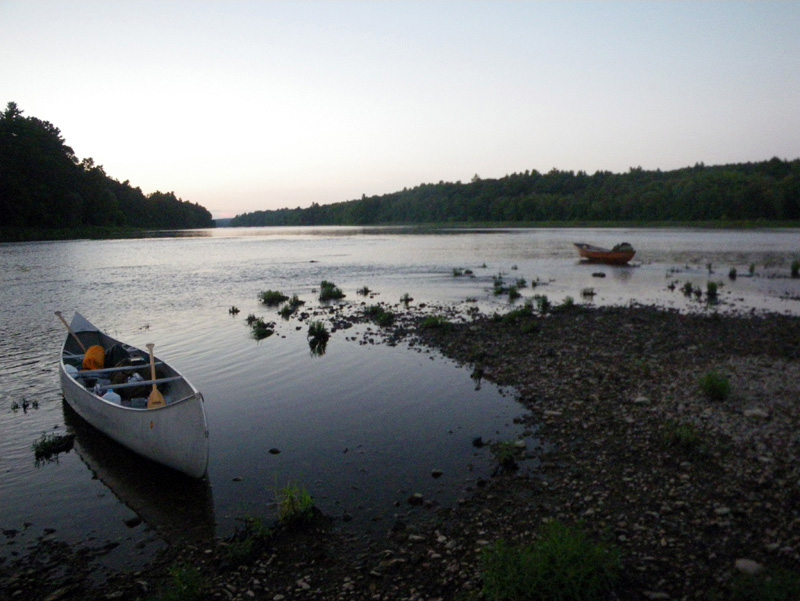
and we pulled the boats up for the night.
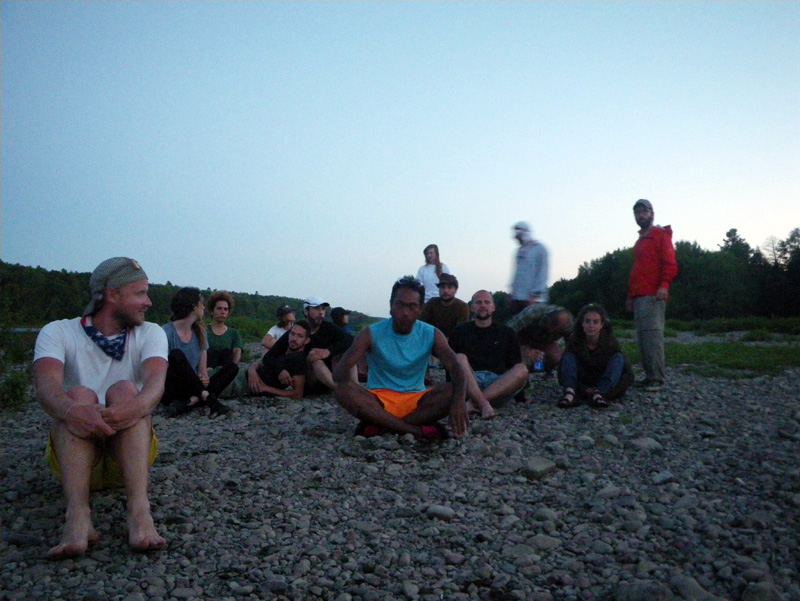
We hadn’t come as far as I had thought we would, but I tried to put that out of my mind. It was, after all, a dérive,
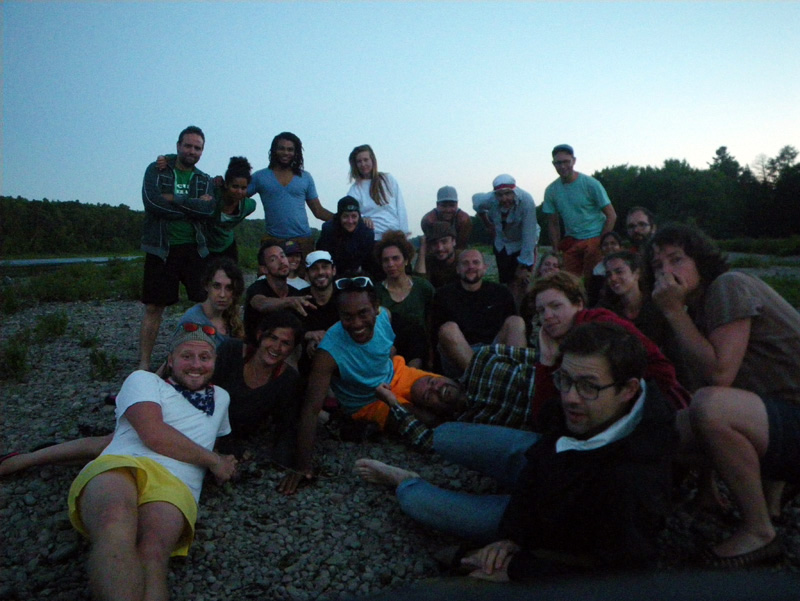
and the crew seemed happy enough with our new home for the night.
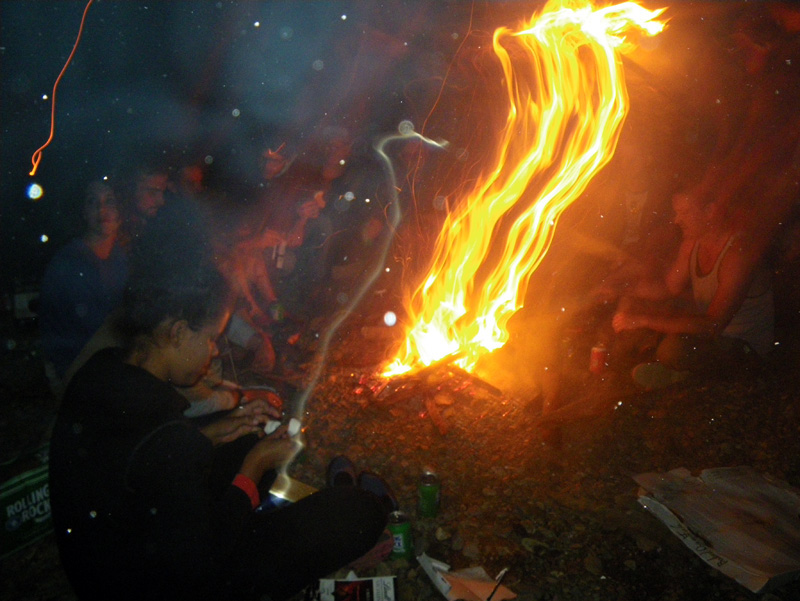
We buit a small fire on the southern tip of the island,
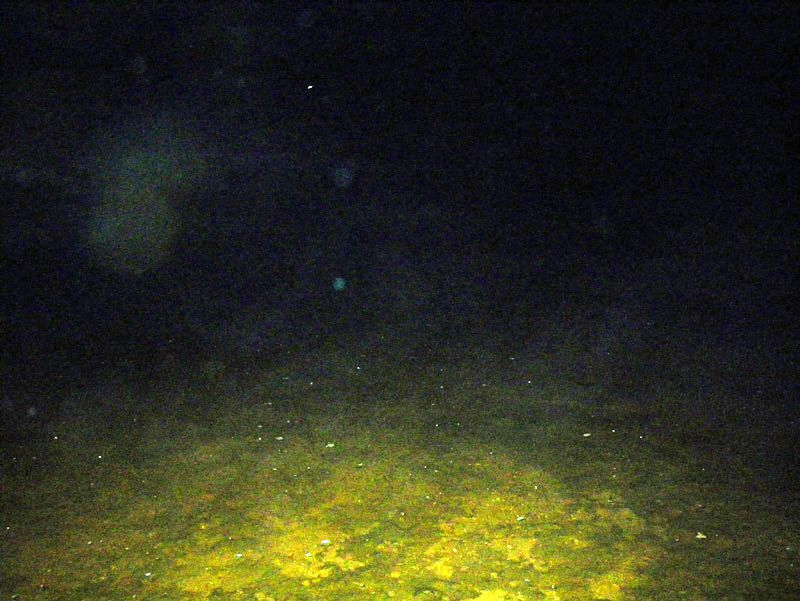
and then, to our amazement, we got a call from Sarah Workneh, the director of the Skowhegan School of Painting and Sculpture.
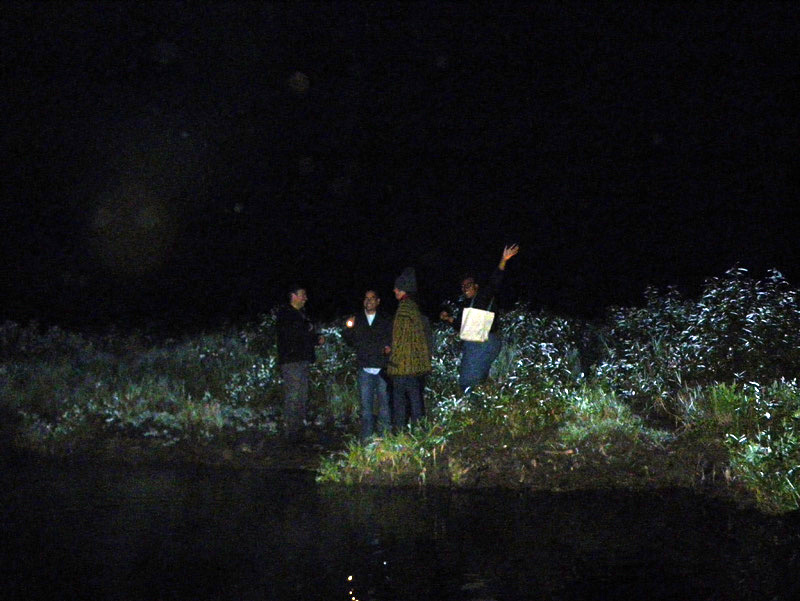
Given only the most vague directions, she and a group of stalwart camp participants  (that is Jeff Williams, Ronny Quevedo, Mores McWreath, and Sondra Perry) had figured out where we were. They bushwhacked through dense underbrush from highway 201 to the water’s edge,
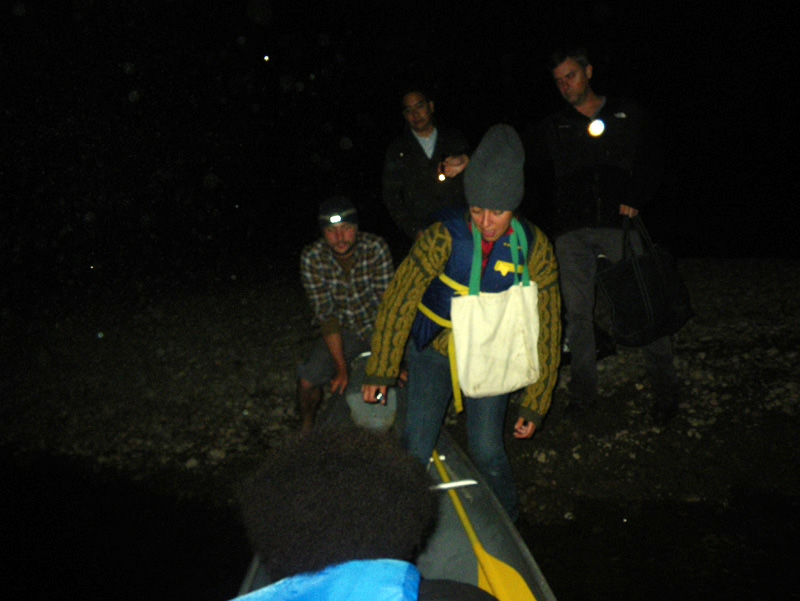
and we ferried them over to the island.
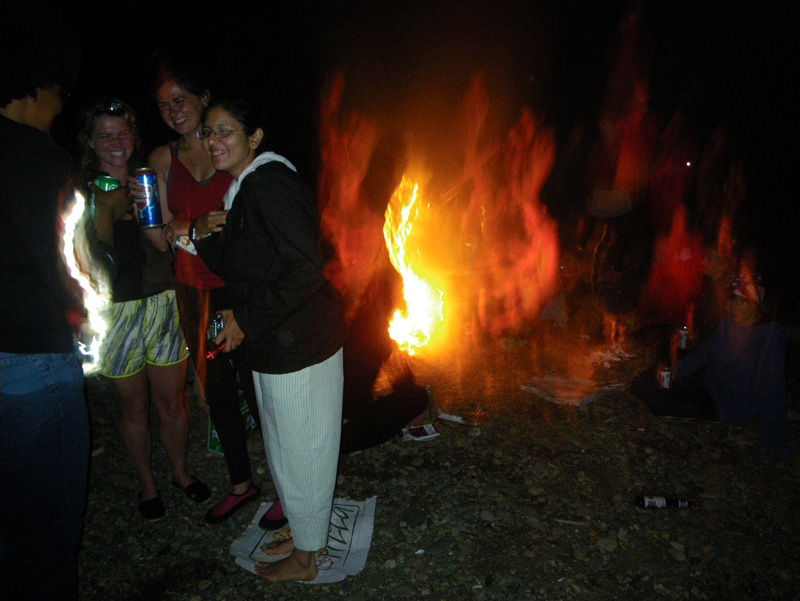
They were absorbed into the party with warm welcome,
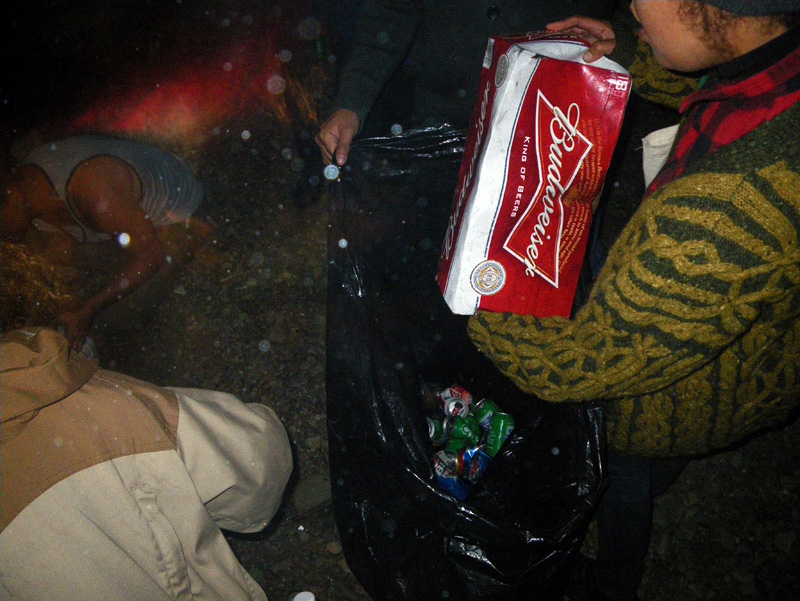
as were the gifts they bore.
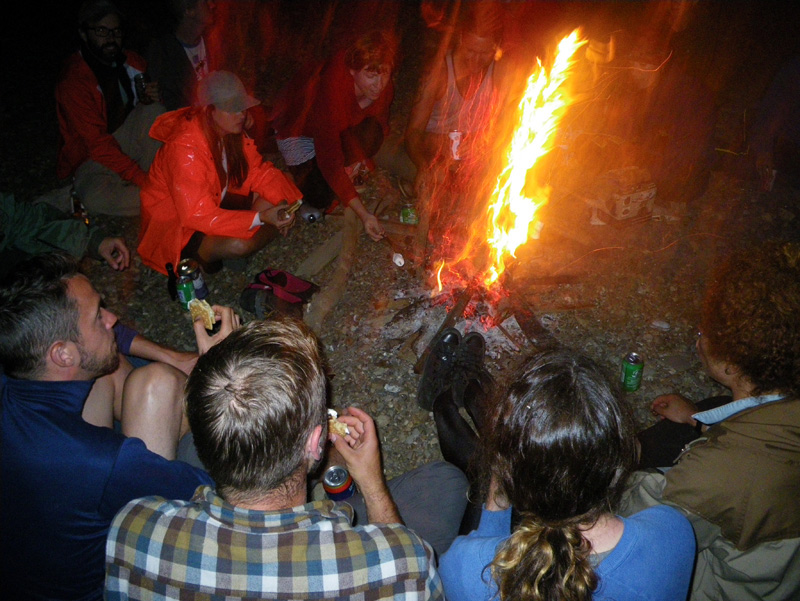
There was something surreal about the groups arrival, as though our strange parallel wilderness had been punctured.
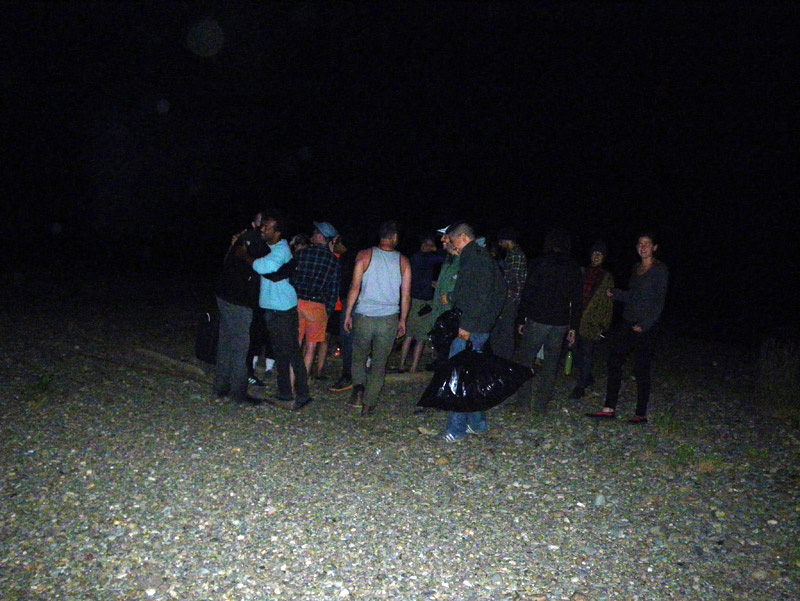
I suppose that we were not as far from civilization as it seemed. What had taken us a 15 hours of paddling and hauling the boats had taken them 30 minutes by car. The hardest part had been traversing the last 300 feet between the highway and the water.
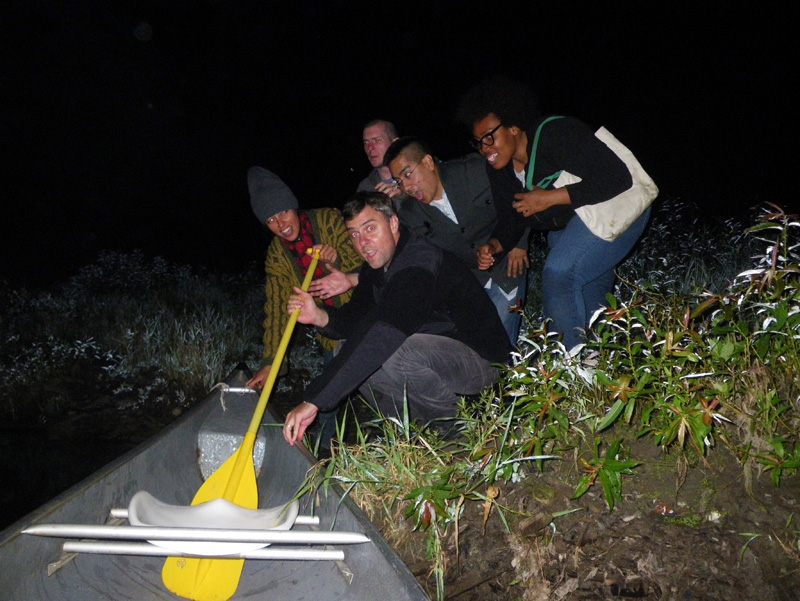
I ferried them back across the river,
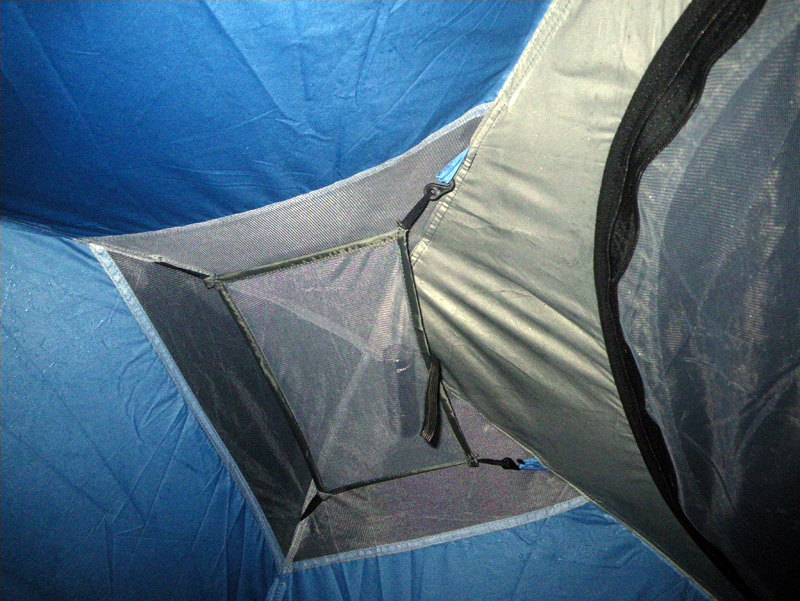
and went to bed to rest up for the second day.
↑ Return to Top of Page ↑